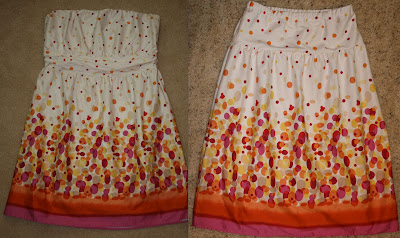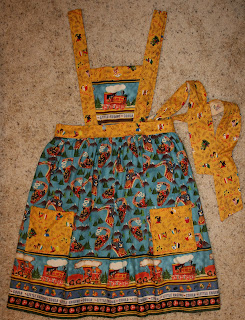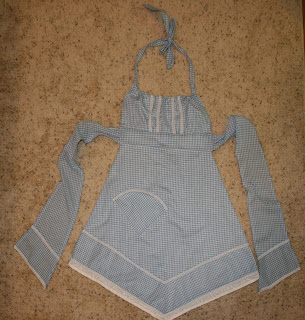A good friend of mine showed me this apron when she had seen some of my aprons. She asked me to make a pattern from it. I did, then made one up (minus the bib) using the pattern. I really like it!
Here's the original apron:
Here's the one I made without the bib:
Here is the pattern:
Pattern: Christmas Ruffles Apron
Bib
Fabric: Fat quarter (Cut out using tulip
patterns)
Ruffle
backing: 24”x 18” piece of Muslin (Cut
to trapezoid shape 17” high, 16” across top and 24” across bottom)
Top and
bottom ruffles: ½ yard fabric (Cut top 8”x 26” and bottom
8”x32”)
Middle
ruffle: ¼ yd fabric (Cut 8”x 28”)
Ties: 1/3 yard fabric, same color as bias tape (Cut
strips 3 ½”x 40” for neck and two 3 ½”x 45” for waist)
3 yards
double fold bias tape
Directions
(Note all seams have 1/2” seam allowance):
1. Finish the upper
edge of small tulip piece with bias tape.
With wrong sides together, stitch tulip pieces together. Finish the seam and continue up the top of
the large tulip piece with bias tape. Tack
the overlapping bias tape down on the small tulip piece. Hem sides of bib.
2. Hem sides and
bottom of the Ruffle Backing muslin piece.
3. Finish lower edges
of the three ruffle pieces with bias tape.
Serge the top edges of the three ruffle pieces. Pin lower ruffle to the bottom edge of the
Ruffle backing muslin piece. Match
sides and centers, then pleat the ruffle evenly, securing it with pins. Top stitch bottom ruffle piece in place. Repeat for the other two ruffle pieces, being
sure to overlap the pieces so the bottom of the upper ruffle covers the upper
edge of the lower ruffle. The upper
ruffle should be about 2 inches below the top edge of the Ruffle Backing Muslin
piece.
4. With wrong sides
together, stitch the bib piece to the Ruffle Backing Muslin piece, matching
centers. On each side of the bib, finish
the upper edges of the Ruffle Backing Muslin piece by pressing ½ inch hem wrong
side out.
5. Stitch the two
waist tie pieces together to make a long strip.
Cut it to 65”. Fold the tie
fabric in half lengthwise right sides together and stitching along the
edge. Pull right side out and
press. Hem both edges. Repeat for the neck tie fabric, cutting in
two sections 20” each.
6. Lay waist tie
fabric across the seam between the bib and the Ruffle Backing Muslin piece and
pin, matching centers. Pin it to overlap
the top ruffle Serged edge. Top stitch
in place.
7. Attach ties at the
corners of the tulip bib for the neck ties.
© 2012 Melanie Johnson




